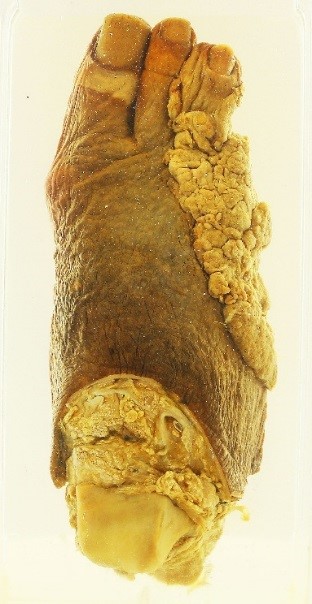how to describe pots: approach to gross pathology
The purpose of this chapter is simply to introduce you to gross pathology and to demonstrate how to describe and appreciate gross morphology i.e. abnormal organs and tissues.
Here is a picture of the foot of a patient who complains of difficulty walking. Try to describe this in your own words.

- Physical examination tells you if this is a tumour, infectious process, or something else. Essentially, the appreciation of the gross pathological features clinches the diagnosis.
- With the correct diagnosis -> one can order appropriate investigations -> proceed to appropriate treatment.
- In internal organs, e.g. in the lung, a radiological test (e.g. X-ray, CT scan) shows the appearance, and this is essentially assessing gross pathology, but in black and white, in vivo.
Key points:
- Essentially, the appreciation of the gross pathological features clinches the diagnosis.
- Subcellular changes -> abnormal appearance of cells -> grossly abnormal organs.
- Gross pathology tells the story of the disease - how it behaves, progresses and gives rise to clinical signs and symptoms.
- In deep seated organs (e.g. liver or lung), we perform radiologic scans or endoscopy - this is the study of gross pathology.
You may find the ONE PAGE Summary useful as a concise summary of the approaches learned.
Click on the button below to access it.
